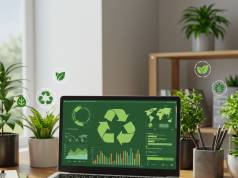In today’s business landscape, consumers are more environmentally conscious than ever before. They demand brands that do more than sell products – they expect companies to demonstrate genuine commitment to sustainability. For inbound marketers, this presents a unique opportunity: by aligning your content, channels, and processes with eco-friendly values, you can attract a passionate audience, foster long-term loyalty, and differentiate your brand.
Understand Your Eco-Conscious Audience

A successful sustainable inbound approach begins with deep audience research. Identify the values, pain points, and information needs of your eco-minded prospects. Use surveys, social listening, and CRM data to segment audiences who prioritize environmental impact. Ask questions like:
- What sustainability topics resonate most (e.g., zero waste, renewable energy, ethical sourcing)?
- Which content formats do they trust (blog posts, videos, whitepapers)?
- What social or environmental certifications influence their decisions?
Once you map these insights to customer personas, you can tailor every stage of your inbound funnel to meet eco-driven expectations, from awareness to advocacy.
Craft Sustainable, Value-Driven Content
Content is at the heart of any inbound strategy. For eco-conscious markets, it must inform, inspire, and demonstrate real environmental impact. Consider these tactics:
- Educational blog series on topics like “How to Reduce Your Carbon Footprint in Daily Operations” or “Guide to Ethical Supply Chains.”
- Transparent case studies showcasing your company’s sustainability metrics, certifications, and partnerships with green organizations.
- Interactive tools, such as a calculator for estimating emissions savings when customers choose eco-friendly options.
Ensure each piece of content adheres to SEO best practices: optimize meta tags, include focus keywords like “sustainable inbound marketing,” and structure articles with clear headers. This dual focus on value and visibility will drive organic traffic and build trust among your target audience.
Optimize Channels with Green Practices
Inbound marketing relies on multiple channels – your website, email, social media, and paid ads. To reinforce your eco-friendly positioning, adopt greener channel tactics:
- Green web hosting: Choose data centers powered by renewable energy to reduce your site’s carbon footprint.
- Eco-conscious email design: Limit large image files, use minimalistic templates, and include calls to action that encourage sustainable behavior (e.g., “Donate to Plant Trees”).
- Social media amplification: Schedule posts during peak engagement times to minimize idle server usage, and partner with green influencers to maximize reach among conscious audiences.
- Low-impact paid ads: Focus on highly targeted campaigns to reduce wasteful impressions, and choose platforms with carbon-offset ad programs.
By optimizing each channel for sustainability, you not only differentiate your brand but also set a measurable standard for environmental responsibility.
Implement Green Technology in Your Inbound Processes
Technology can both empower and hamper sustainability. To ensure your tech stack supports your eco-goals, consider the following:
- Energy-efficient CRMs and CMS: Select platforms with lean codebases and energy-optimized servers.
- Automated optimization tools: Use AI-driven solutions that consolidate workflows, reducing redundant tasks and digital waste.
- Paperless workflows: Replace print-based collateral and contracts with secure electronic documents to save resources.
Auditing your martech stack for sustainability not only lowers environmental impact but can also streamline operations and cut overhead costs over time.
Measure Impact with Eco-Friendly KPIs
Traditional marketing metrics focus on clicks, leads, and conversions. For sustainable inbound, layer in environmental KPIs to demonstrate your green credentials:
- Carbon offset per campaign: Calculate emissions associated with digital activities and invest in offset programs accordingly.
- Paper saved through digital adoption: Quantify the reduction in print collateral usage.
- Sustainable partner engagement: Track the percentage of campaigns conducted in collaboration with certified eco-friendly businesses.
- Audience eco-action rate: Measure behaviors like newsletter subscribers who also sign petitions or donate to environmental causes.
Publishing these sustainability metrics in your reports and on your website reinforces transparency, builds credibility, and can inspire both internal teams and external stakeholders to prioritize green initiatives.
Collaborate with Sustainable Partners
A brand is only as green as its supply chain and partnerships. Forge alliances with NGOs, eco-certification bodies, and fellow green businesses to bolster your inbound efforts:
- Co-branded content: Partner on e-books or webinars to tap into partner audiences and co-create educational resources.
- Affiliate programs: Offer exclusive discounts when customers purchase through eco-certified vendors, driving mutual growth.
- Joint social campaigns: Amplify environmental awareness days (e.g., Earth Day) by collaborating on a unified messaging strategy.
These collaborations not only expand your reach but also reinforce your brand’s ecological authenticity in the eyes of discerning consumers.
Leverage User-Generated Eco-Content
Your audience can be your most powerful advocates when it comes to sustainability. Encourage user-generated content (UGC) that highlights eco-friendly practices involving your brand:
- Social challenges: Launch hashtags like #GreenYourRoutine where followers share how they incorporate your product or service sustainably.
- Video testimonials: Feature customers explaining how your brand helped them reduce waste or lower emissions.
- Photo contests: Offer eco-friendly prizes for the best images showcasing sustainable use of your offerings.
UGC not only provides authentic social proof but also fosters a community of brand advocates who amplify your message organically.
Maintain Transparency and Continuous Improvement

Sustainability is a journey, not a destination. Regularly audit your inbound processes, content, and partnerships to identify areas for improvement. Communicate progress and setbacks openly:
- Annual sustainability report: Publish detailed findings on what worked, what didn’t, and next steps.
- Customer feedback loops: Solicit ongoing input on your green marketing efforts through surveys and community forums.
- Internal training: Educate your marketing team on the latest eco-practices and sustainable tools.
By embedding transparency into your culture, you reassure stakeholders and continually enhance the effectiveness of your sustainable inbound marketing.
Conclusion: Cultivating Long-Term Growth Through Green Inbound Marketing
As consumer preferences shift toward brands that demonstrate real environmental stewardship, aligning your inbound marketing with sustainability is no longer optional – it’s essential. By understanding your eco-conscious audience, creating value-driven content, optimizing channels for green practices, measuring eco-metrics, and maintaining transparency, your brand can build deeper connections and foster lasting loyalty. Embrace these strategies to green your inbound marketing and cultivate growth that benefits both your business and the planet.




